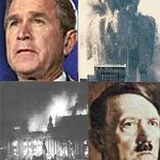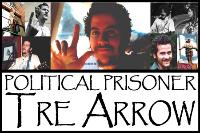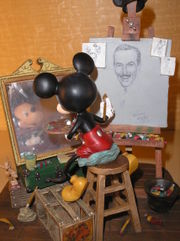Monday, March 31
CIA Drug Traffikcing is "Golden" Through the Triangle, Crescent and Coast
In country after country, from Mexico and Honduras to Panama and Peru, the CIA helped set up or consolidate intelligence agencies that became forces of repression, and whose intelligence connections to other countries greased the way for illicit drug shipments.--Peter Dale Scott, Cocaine Politics, 1991
In December 1993, Larry Collins, author of the book Black Eagles that "deals with the CIA, cocaine traffic and Central America in the mid-'80s," penned an op-ed titled "The CIA Drug Connection Is as Old as the Agency" for the International Herald Tribune.
Collins determined that CIA-sponsored opium/heroin trafficking originated in Indochina--Laos, Burma, Thailand, Cambodia and Vietnam--during Democrat President Harry Truman's White House soon after World War II with the Agency's genesis in the National Security Act of 1947.
Collins also linked the CIA to Central Asia's global drug trade originating from the Golden Crescent, an ancillary development of the Agency's proxy war in Afghanistan against the Soviet Union in 1979 waged via the ISI, Pakistan's state intelligence.CIA ties to international drug trafficking date to the Korean War. In 1949, two of Chiang Kai-shek's defeated generals, Li Wen Huan and Tuan Shi Wen, marched their Third and Fifth Route armies, with families and livestock, across the mountains to northern Burma. Once installed, the peasant soldiers began cultivating the crop they knew best, the opium poppy.
When China entered the Korean War, the CIA had a desperate need for intelligence on that nation. The agency turned to the warlord generals, who agreed to slip some soldiers back into China. In return, the agency offered arms. Officially, the arms were intended to equip the warlords for a return to China. In fact, the Chinese wanted them to repel any attack by the Burmese.
Soon intelligence began to flow to Washington from the area, which became known as the Golden Triangle. So, too, did heroin, en route to Southeast Asia and often to the United States.
If the agency never condoned the traffic, it never tried to stop it, either. The CIA did, however, lobby the Eisenhower administration to prevent the Bureau of Narcotics and Dangerous Drugs, the DEA's predecessor, from establishing monitoring posts in the area to study the traffic. Today, the Golden Triangle accounts for about half the heroin in circulation in the world.
Nowhere, however, was the CIA more closely tied to drug traffic than it was in Pakistan during the Afghan War. As its principal conduit for arms and money to the Afghan guerrillas, the agency chose the Pakistan military's Inter-Services Intelligence Bureau. The ISI in turn steered the CIA's support toward Gulbuddin Hekmatyar, an Islamic fundamentalist. Mr. Hekmatyar received almost half of the agency's financial support during the war, and his fighters were valiant and effective. But many of his commanders were also major heroin traffickers.Former NBC producer Daniel Hopsicker is well schooled in the CIA's storied drug trafficking history. At MadCowNews.com, he provides a valuable--but overlooked and underappreciated--public service by updating US complicity since the 9/11 terrorist attacks with reports on CIA and Department of Homeland Security drug planes that regularly shuttle Latin American cocaine in the US through Florida's Golden Coast.As it had in Laos, the heroin traffic blossomed in the shadows of a CIA-sustained guerrilla war. Soon the trucks that delivered arms to the guerrillas in Afghanistan were coming back down the Khyber Pass full of heroin.
The conflict and its aftermath have given the world another Golden Triangle: the Golden Crescent, sweeping through Afghanistan, Pakistan and parts of the former Soviet Union. Many of those involved in the drug traffic are men who were once armed, trained and financed by the CIA.
For example:
Last November, Chinese participation in the U.S. drug trade resurfaced in a big way, though it was kept rather mum.
At Mexico's Pacific NAFT sea port of Manzanillo--the principal entry point for Chinese products for pre-North American Union markets in the US and Canada-- at least 23.5 tons of cocaine were discovered by Mexican officials in cargo containers aboard a Hong Kong vessel routed through Columbia.
Mexican military crews discovered the huge cocaine shipment Tuesday, saying they had seized more than 11 tons of cocaine found in containers at the Manzanillo port. But on Thursday, Mariano Francisco Saynez Mendoza, the secretary of Mexico's navy, announced the discovery of more containers filled with cocaine, pushing the total amount seized to 23.5 tons. The seizure dwarfed the previous record of 11.5 tons seized last month in the northern state of Tamaulipas.......and so it goes and goes and goes.
Law enforcement officials said the final tally of cocaine seized in Manzanillo could go even higher because they are still searching containers delivered to the port by a Hong Kong-flagged ship that arrived in Manzanillo from Buenaventura, Colombia. The ship is no longer at the port, and there has been no word about arrests or charges.











